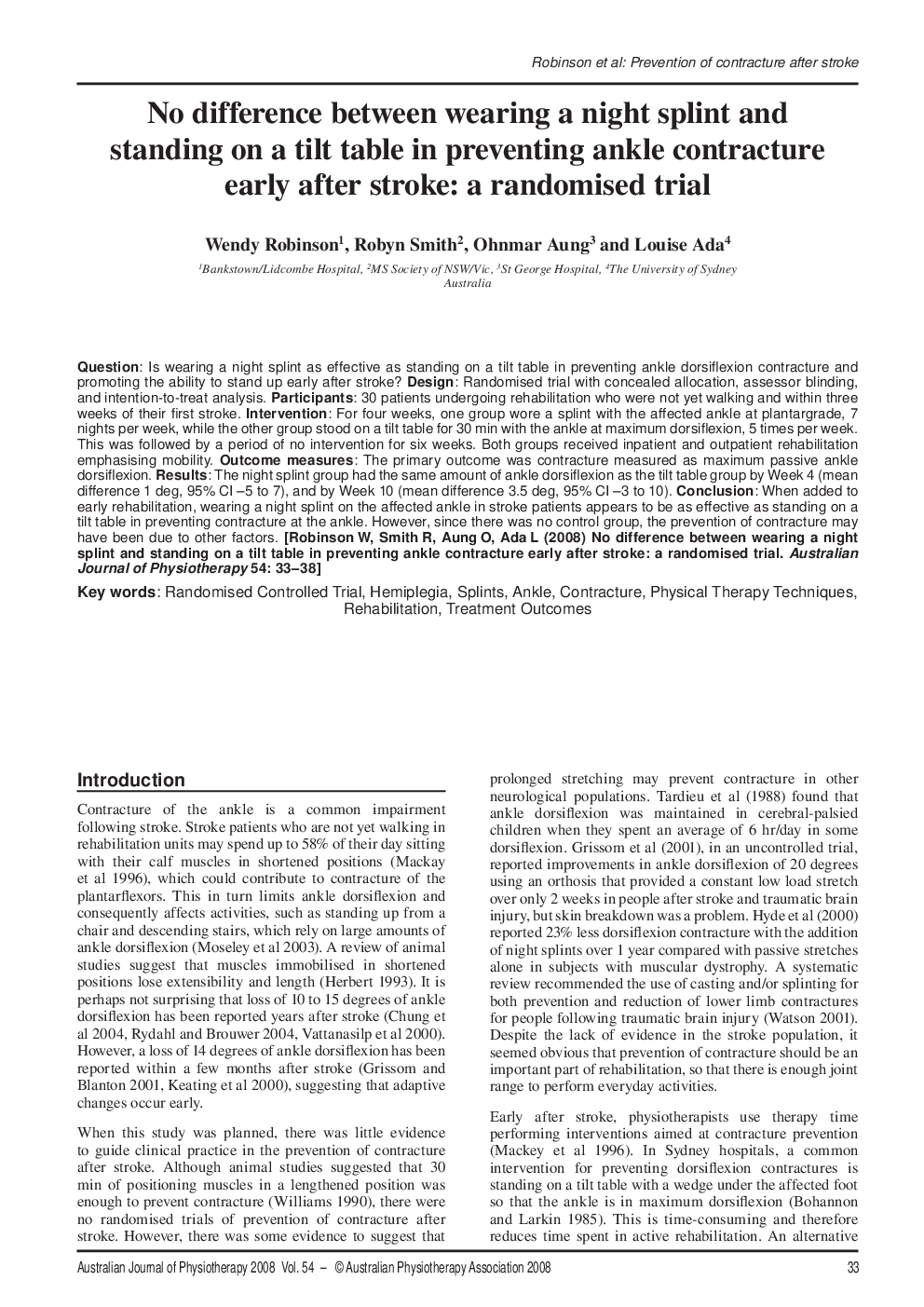| Article ID | Journal | Published Year | Pages | File Type |
|---|---|---|---|---|
| 2698634 | Australian Journal of Physiotherapy | 2008 | 6 Pages |
QuestionIs wearing a night splint as effective as standing on a tilt table in preventing ankle dorsiflexion contracture and promoting the ability to stand up early after stroke?DesignRandomised trial with concealed allocation, assessor blinding, and intention-to-treat analysis.Participants30 patients undergoing rehabilitation who were not yet walking and within three weeks of their first stroke.InterventionFor four weeks, one group wore a splint with the affected ankle at plantargrade, 7 nights per week, while the other group stood on a tilt table for 30 min with the ankle at maximum dorsiflexion, 5 times per week. This was followed by a period of no intervention for six weeks. Both groups received inpatient and outpatient rehabilitation emphasising mobility.Outcome measuresThe primary outcome was contracture measured as maximum passive ankle dorsiflexion.ResultsThe night splint group had the same amount of ankle dorsiflexion as the tilt table group by Week 4 (mean difference 1 deg, 95% CI –5 to 7), and by Week 10 (mean difference 3.5 deg, 95% CI –3 to 10).ConclusionWhen added to early rehabilitation, wearing a night splint on the affected ankle in stroke patients appears to be as effective as standing on a tilt table in preventing contracture at the ankle. However, since there was no control group, the prevention of contracture may have been due to other factors.
